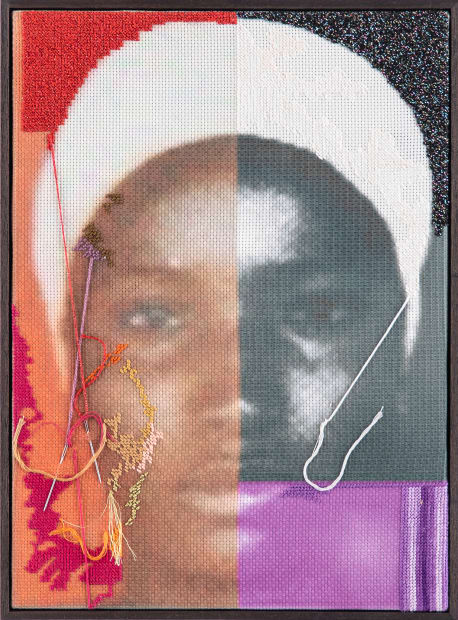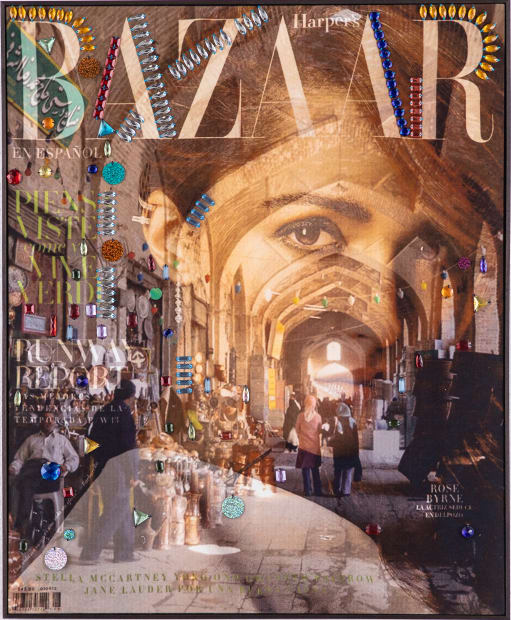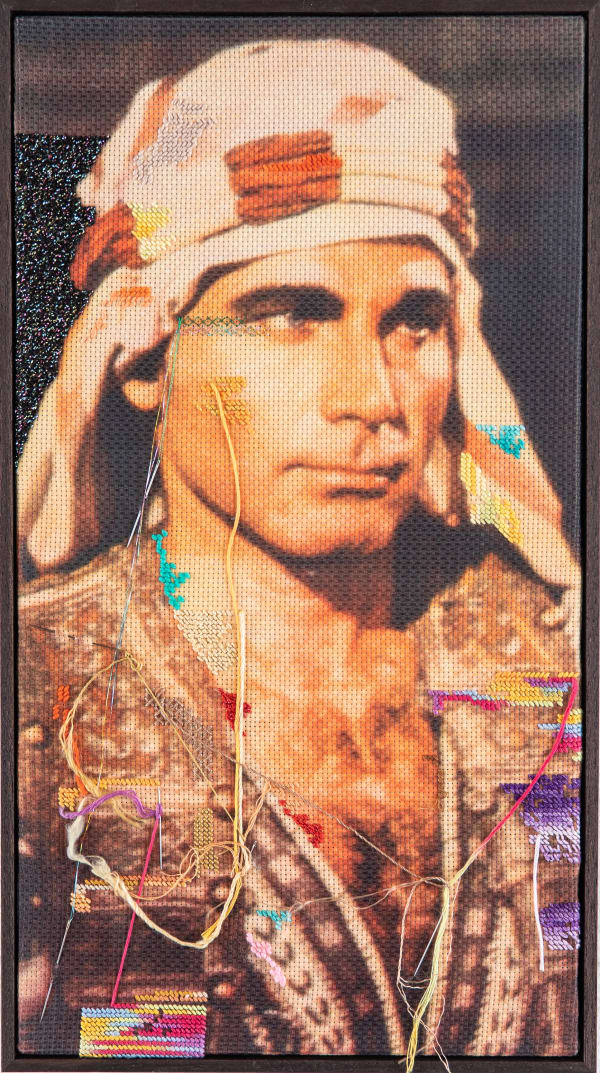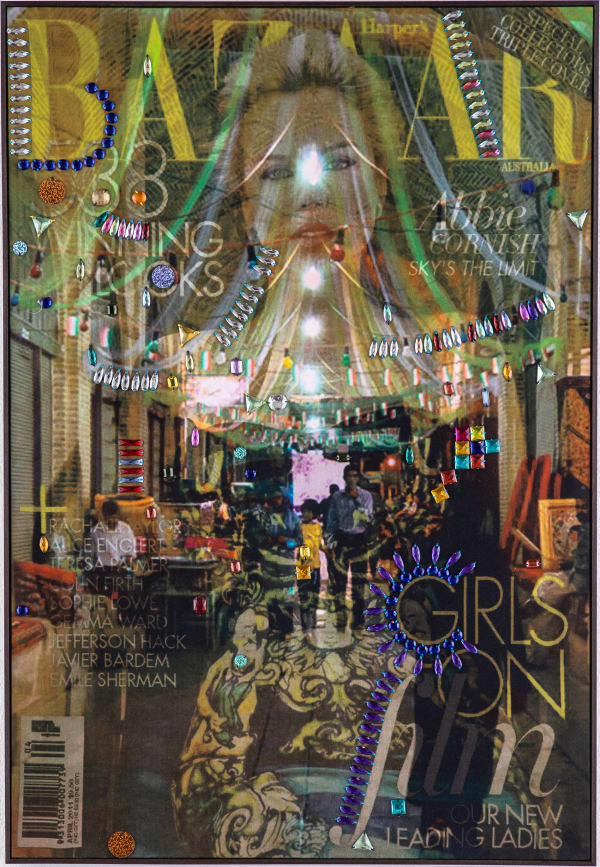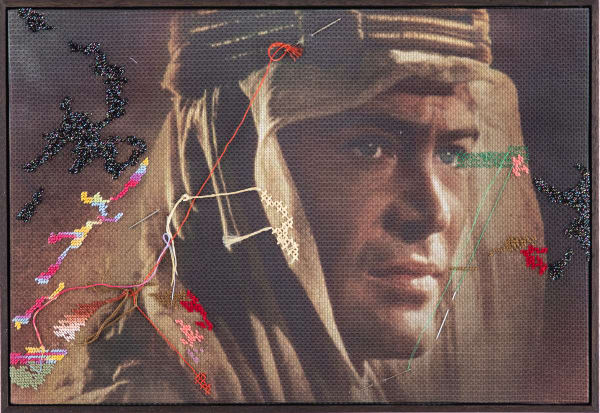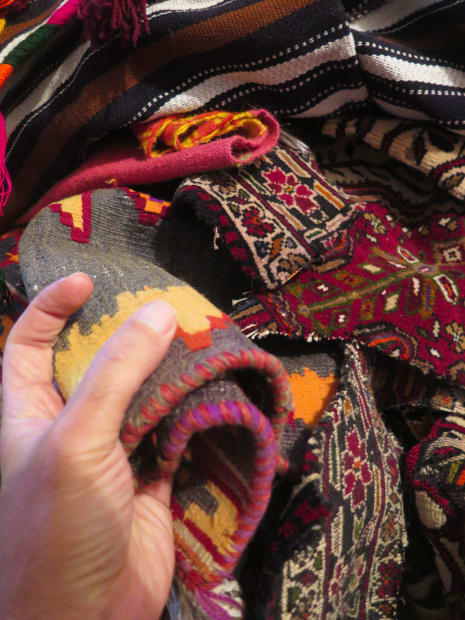-
-
Coinciding with his solo exhibition at Lawrie Shabibi The Lacemaker, we connected with Iranian-British artist Farhad Aharania from his studio in Shiraz for a Q&A. He details his array of sources of inspiration, from Hollywood actors to Iranian bazaars and the car-boot sales of Yorkshire. Through the additive process of embroidering, Ahrarnia makes these images his own, creating a texture otherwise lacking from flat digital images, and by fixing objects to paintings made by commercial painters, questioning notions of originality.
-

-

-

-

-
Throughout your works for The Lacemaker, you have taken an image from a primary or secondary source, such as the internet/print material, then transmitted this onto fabric, which you then manipulated through embroidery. Similarly, the oil paintings are commercial reproductions of original paintings. How do you understand this process of personalizing an image and making it your own?
Through the creation of reproductions a new set of qualities emerges. The applied brush strokes and the painterly marks achieved are slightly more crude, coarse, diluted, overdone or rigid and self-conscious. These qualities speak to an over-compensation to achieve a desired effect, and of being affected, and as such, reiterate the notion of cultural mimicry which never feels "authentic" yet runs rampant in many aspects of our cross-cultural multiple realities. Indeed we are all constantly in a state of selecting and editing images which to some degree entice, challenge, and confirm our status, interests and existential fears and ambitions. Even through the simple acts of flicking through, browsing, and selecting images, some degree of personalisation and ownership is achieved by each and every one of us.
This is the first time we have seen you produce works with oil paintings in this format. You start with paintings done by local artisans, which you then work on top of, sewing in objects such as combs, jewellery, and embroidery. Where did you draw the inspiration for this series and how did you source the objects?
The sourcing and the inspiration come from the many car-boot sales that I used to attend religiously in Yorkshire every Sunday morning in freezing cold weather, rain or shine, and the antique shops and the Bazaars of course. In these places the hierarchy of objects is heavily interrupted and reshuffled. The objects appear as though they were thrown up in the air, and have arbitrarily landed on top of one another.
I am intrigued by the formal, sculptural qualities of everyday objects such as nail clippers, pencil sharpeners and combs as well as the painterly qualities of buttons, sequins, and woven items. I also wanted to put more emphasis on other categories of hand made and mass produced utility objects, for their inherently artistic attributes in relation to the privileged position of paintings as a superior cultural product above other visual forms.
-

-
Farhad Ahrarnia | The Lacemaker
Past viewing_room
